A great puffball mushroom recipe that just about anyone who likes a good bowl of pasta will enjoy is a simple ragu or wild mushroom pasta sauce.
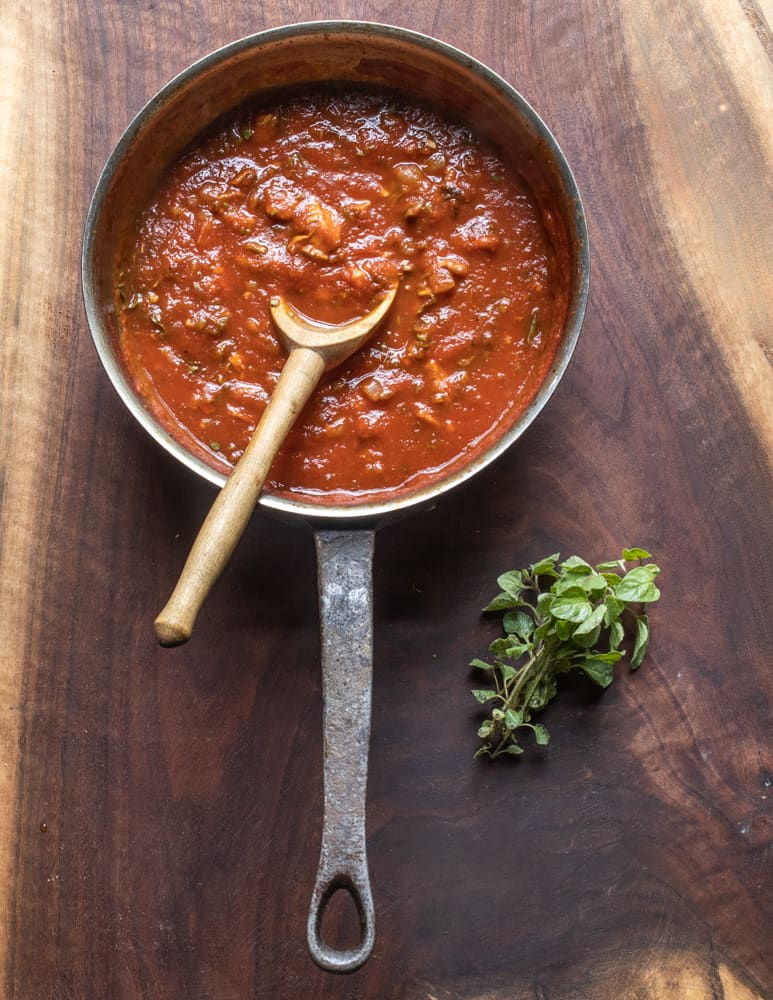
Puffball mushrooms are often really large, and can be a little cumbersome to work with. Slicing them into big, chunky steaks is a good, tried and true preparation for them, but some people find the texture a little different, or don't care for it, especially if they're new to wild mushrooms.
I know plenty of mushroom hunters who claim to pass them up too, but mostly the only way they've tried them is the aforementioned, or just cooked as-is in a slab on the grill.
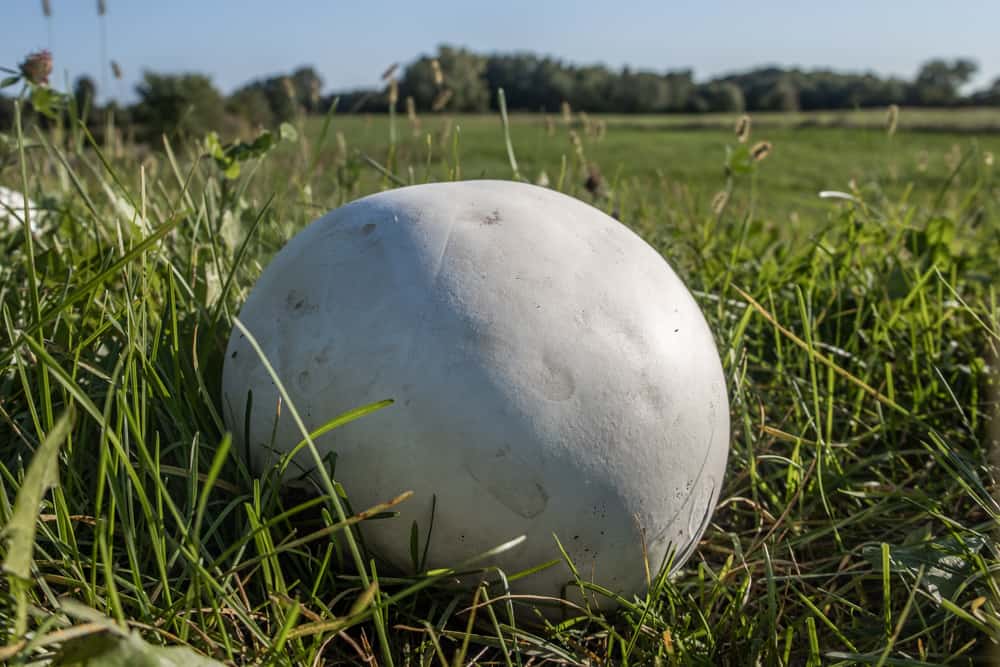
Personally, I like them any old way, but a little technique can go a long way to making them appealing to puffball skeptics, which is a big part of this recipe.
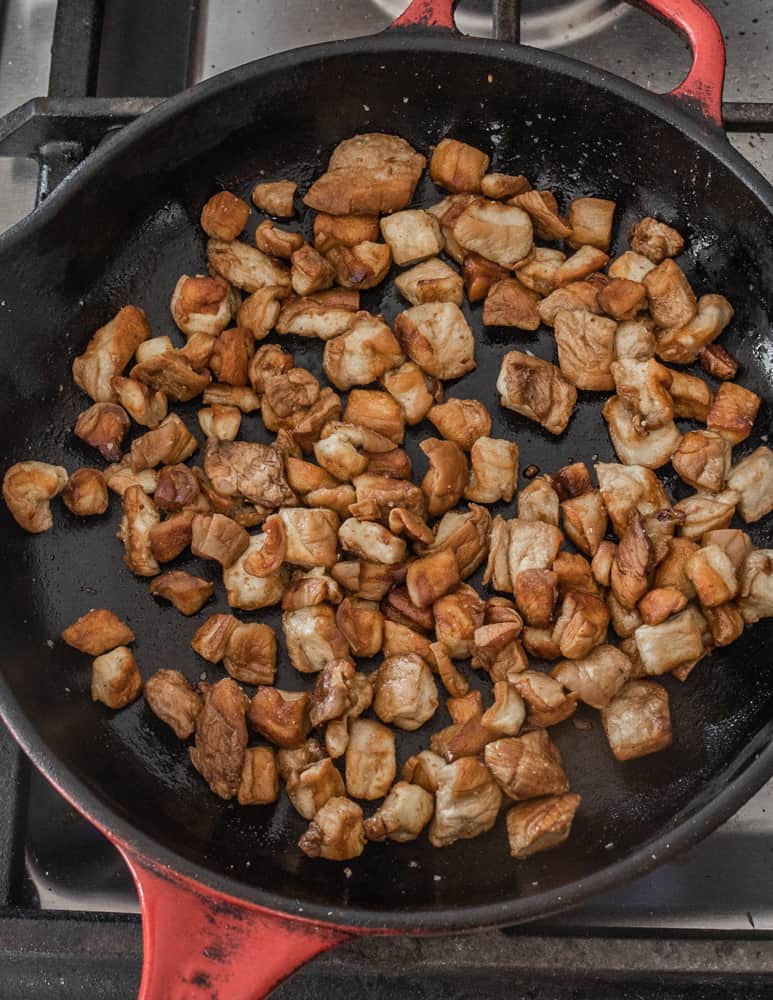
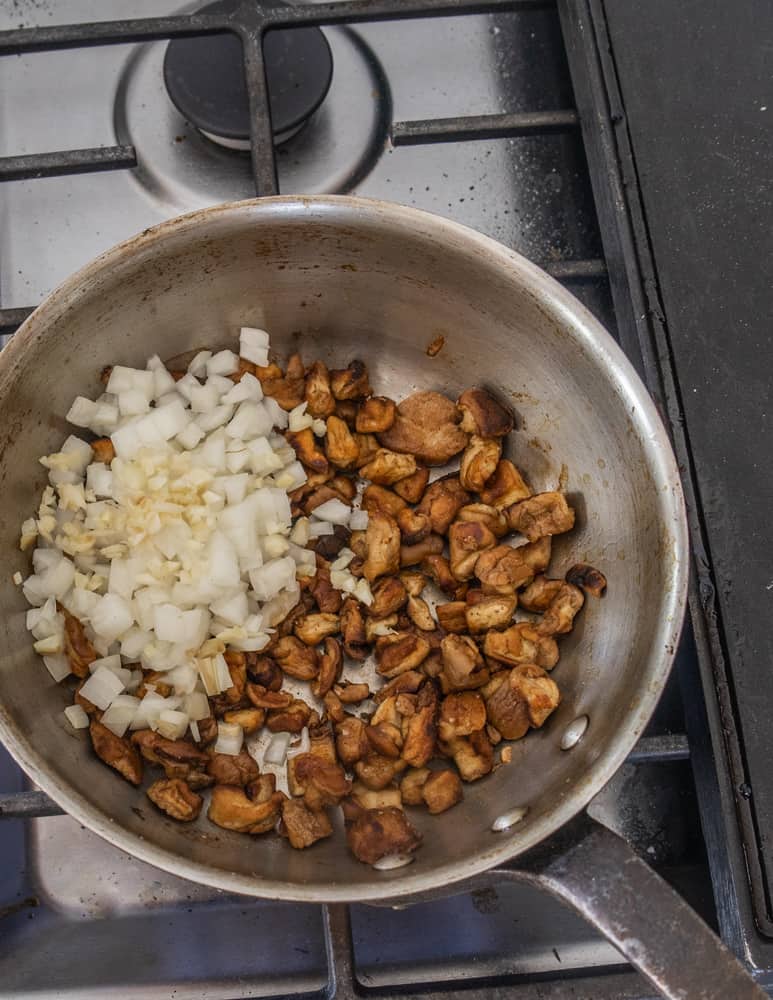
The big takeaway here is browning the puffballs ever so slowly in butter or another fat, taking your time to let them get golden brown and cook off their natural water, of which they contain a good amount.
It will take at least 30 minutes of gentle cooking to get them to where they need to be, but, after that's done the sauce comes together pretty quick. It's an easy thing to make ahead, and, once it's done, you can store it for a few days in the fridge or freeze it for a rainy day.
You could also process and can this in a water bath, adding 1.5 teaspoons of lemon juice to the finished sauce before packing into jars (you would also want to multiply the recipe by at least 5 to make a decent-sized batch).
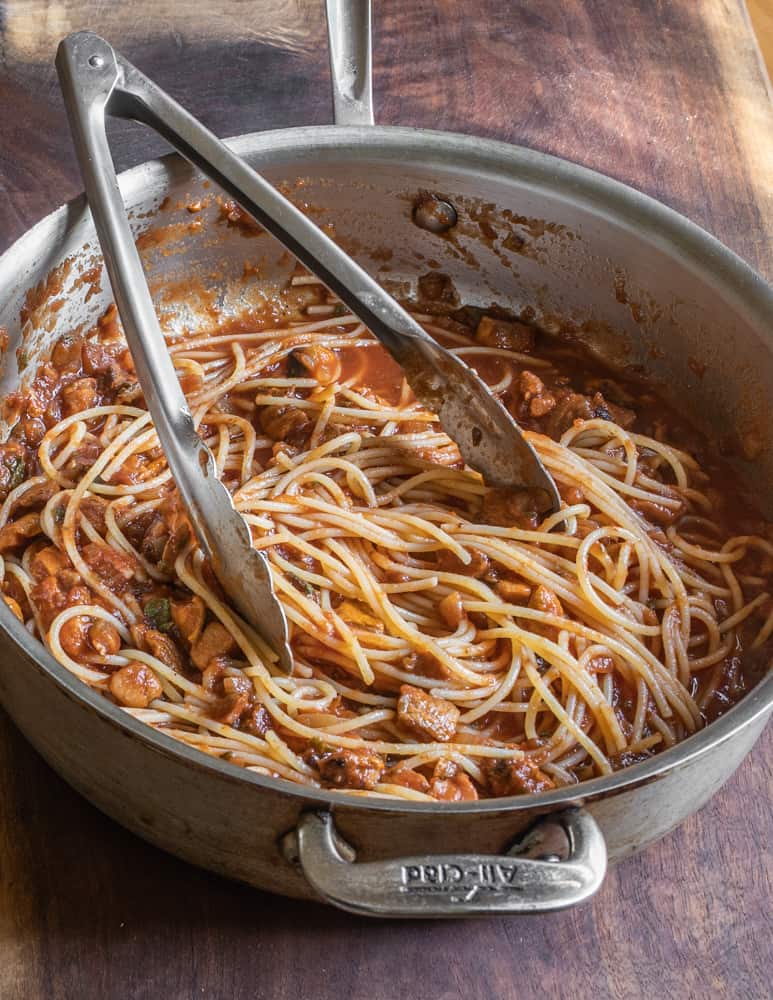
The finished product is simple, and nostalgic for me. If I close my eyes, I can taste the canned mushroom pasta sauce from a jar that my parents used to keep in the cupboard, just with a better flavor.
Of course, you can add different mushrooms if you like, but it's a pretty darn useful way to sneak those puffballs into a meal.
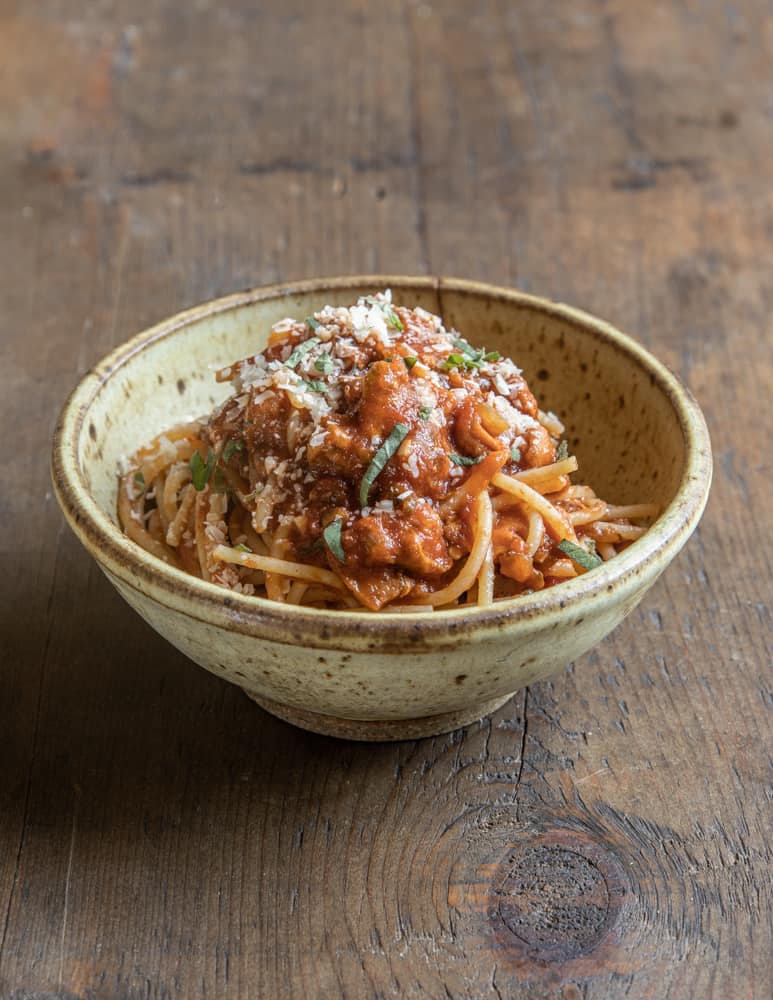
Fresh Puffball Mushroom Ragu or Pasta Sauce
Equipment
- 1 3 quart sauce pot
- 1 Pasta pot
Ingredients
- 8 oz fresh puffball pristine, firm and pure white (frozen, cooked puffball can also be used)
- 5 oz 1 small yellow onion, diced ¼ inch
- 2 large cloves garlic finely chopped
- ¼ cup dry white wine
- 4 oz unsalted butter plus more if the pan gets dry, and more for finishing if you like
- 1 tablespoon tomato paste optional
- 1 28 oz can whole peeled tomatoes
- Pinch of crushed red pepper flakes
- 1 tablespoon chopped fresh oregano or your favorite herb, or a bit of crushed dried wild bergamot
Serving
- 12 oz cooked pasta or ~ half a one pound box of dry pasta
Instructions
Slowly brown the puffballs
- Cut the puffball into roughly ½ inch slices, then cut them into cubes. In a wide, deep pan, cook the puffballs in the butter on medium heat, stirring occasionally for 30 minutes, or until they’re mostly golden brown and most of their liquid has cooked off. Add the onions and garlic halfway through the cooking. If the pan gets dry, add a little more butter during the process. Take your time here, you really want the puffballs as golden as possible.
- Add another knob of butter or a splash of water if the pan gets dry. Add the tomato paste and crushed red pepper and cook for 2 minutes more, smushing the tomato paste around the help it get some color.
- Meanwhile, coarsely puree the tomatoes in the can using a handblender, or transfer them to a bowl (I like to squeeze the tomatoes in a bowl in the sink to remove seeds first, but if you don't think it's necessary, you do you).
- Add the wine and cook it off, then add the chunky tomato puree, turn the heat to a gentle simmer, and cook for 20 minutes, or until thickened. Stir in the herbs, double check the seasoning for salt and adjust as needed, then serve.
Serving
- To serve the sauce, heat the sauce in a large saute pan, double check the seasoning again, then add 8 oz of freshly cooked, hot pasta to the sauce.
- Mix the sauce around with the pasta and cook on low heat for a minute. If the pan gets dry, add a splash of pasta cooking water. Remove the noodles from the sauce into waiting, warmed bowls, spoon the excess sauce over each serving, and serve. Pass grated parmesan at the table.

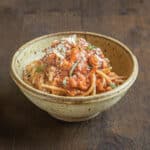
Patricia
Great idea! Thanks
Greg Taniguchi
Yea, I try to avoid tomato paste and my go to is San Marzano whole peeled tomatoes
Emily Hefko
Thank you for an excellent idea for using puff balls! But your recipe is, well, hmm... I'd pm this if I could because it's meant with kindness. It's inefficient and ignores some worthy tradition. Starts out well enough with the mushrooms in butter. But what if you added your onions and garlic there, towards the end of mushroom cook time along with a bit more butter or a splash of olive oil? Then deglaze the pan with the white wine(traditional) to release all that awesome flavor you just developed in the pan. Now add your t. paste if you must. Here we reach the problematic use of tomatoes. What a mess you're making! I get that you want to have some chunks but mostly be saucy. As a home cook for a big family child care and a gardener there are 2 ways I'd approach this. If I'm working from cans it is for a quick easy option. They sell tomato puree' already strained. use a big can of that and either a small can of diced toms(couple spoons of salsa left in a jar?) or a couple of fresh ones cleaned and diced. The other way is to oven roast your fresh garden paste tomatoes, puree, and strain/food mill, reserving a few for the chunks of course. With this option, you won't need added tomato paste. I honestly think this is a one-pan dish if you use the biggest sautee pan or a cast iron dutch oven. I do hope you find this helpful. Happy foraging!
Alan Bergo
Emily, I find the texture of canned, diced tomatoes unpleasant, so I prefer to use only cans of whole, peeled tomatoes. Adding additional, excess cans of things is unnecessary, and inefficient in my mind. Canned tomato puree I also don't care for, it's a personal preference. The higher amount of water in the whole tomatoes gives you more control over the finished product and prevents a thick, stodgy sauce.